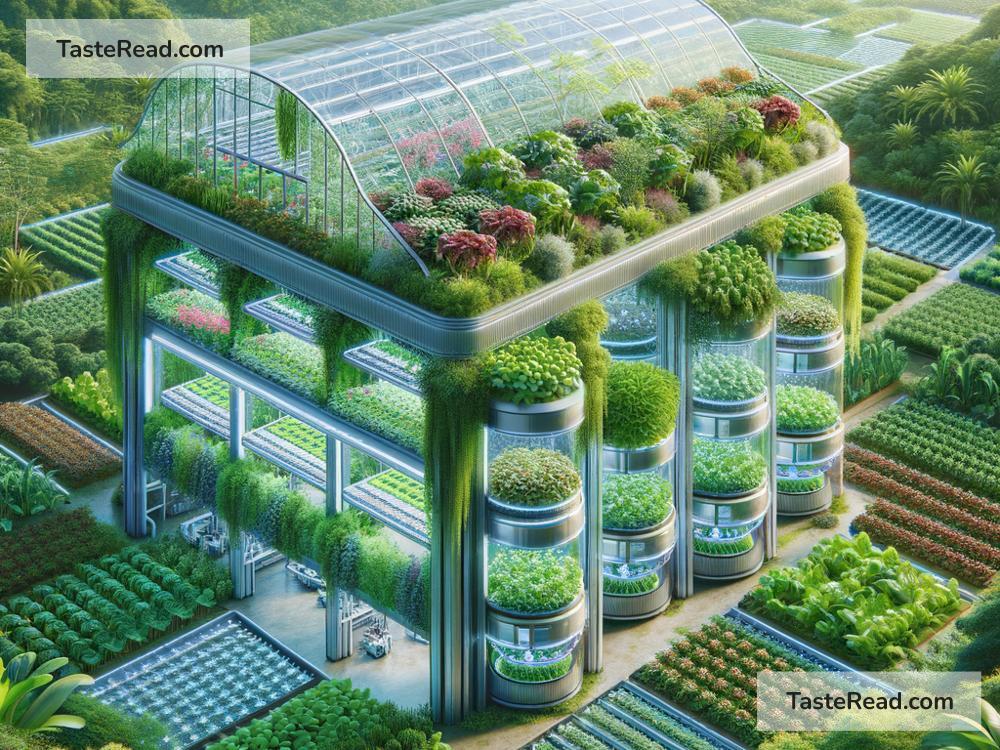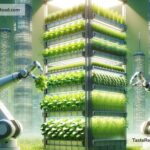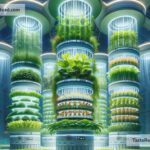The Future of Food and Ecological Restoration: Nourishing Ourselves and the Planet
Food is a cornerstone of human life. It gives us energy, connects us through culture, and shapes how we live, work, and grow. However, today’s way of producing food has created big challenges for both people and the Earth. Factories, farms, and food systems often harm the soil, water, and air. At the same time, millions of people go hungry in a world with enough food to feed everyone. Looking ahead, we need better ways to grow, share, and eat, while restoring nature. The future of food could shape not only what’s on our plates but also the health of the planet we call home.
Current Food Challenges
Today, farming takes up a huge amount of space on Earth. About 40% of land is used for growing crops or raising animals. A lot of forests, grasslands, and wetlands have been cut or burned to make room for agriculture. This hurts animals and plants that rely on those lost spaces. Farming also often releases greenhouse gases, such as carbon dioxide and methane, which contribute to climate change. Many farms rely heavily on fertilizers, pesticides, and water, which may lead to pollution or running out of clean water.
At the same time, many people don’t have access to enough food, while others waste large amounts of it. In some communities, fresh and healthy options are hard to find or too expensive, making it easier to eat unhealthy snacks or processed meals. This imbalance shows how our food systems struggle to meet both human and environmental needs.
A New Era of Food: Innovative Approaches
The future of food is already beginning to take shape, and it looks promising. Scientists, farmers, and innovators are working hard to make farming smarter and more sustainable. Below are some exciting changes that could become more common.
-
Precision Farming: Technology is changing farming. New tools, like drones and sensors, help farmers know exactly where and when their plants need water, sunlight, or nutrients. By using resources wisely, precision farming reduces waste, saves money, and protects the environment.
-
Vertical Farming: Imagine growing food in tall towers rather than flat fields. Vertical farming uses stacked trays to grow crops indoors, using LED lights instead of natural sunlight. This can save space, use less water, and make fresh food available in cities where farmland is far away.
-
Alternative Proteins: Raising cows, pigs, and chickens takes a lot of land and energy. But what if we could make protein-rich foods without animals? Companies are creating plant-based meats and lab-grown proteins that taste like the real thing. These alternatives could help reduce greenhouse gases and use less land and water.
-
Local and Seasonal Eating: In the future, more people may start eating foods grown locally and in season. This helps reduce the energy needed to ship food across the world and supports small, local farmers. Eating locally can also mean fresher, tastier ingredients.
-
Food Waste Solutions: Innovations that reduce food waste are on the rise. Apps can connect restaurants with people who want leftover food at cheaper prices. Some companies are turning spoiled food into compost or energy, ensuring nothing is wasted.
Restoring Nature Alongside Better Food Choices
As we rethink food, it’s also crucial to repair the harm done to nature. Ecological restoration is all about bringing damaged environments back to life. Healthy ecosystems can clean air, hold carbon, and make it easier to grow food sustainably. Here’s how ecological restoration connects with the future of food:
-
Agroforestry: Combining trees with crops is a powerful way to help the environment. Trees protect the soil from erosion, attract helpful insects, and provide shade. Agroforestry also gives farmers more products to sell, like fruits, nuts, or wood.
-
Rewilding: In some areas, restoring nature means letting wildlife return. Rewilding involves stopping harmful farming or development in certain spaces and letting native plants and animals take over. This can make ecosystems more resilient and biodiverse.
-
Regenerative Agriculture: Unlike traditional farming, regenerative agriculture focuses on improving soil health. Farmers use techniques like crop rotation, cover crops, and minimal plowing to restore the ground. Healthy soil holds carbon, which reduces climate impacts.
-
Wetland and Forest Restoration: Wetlands and forests act as nature’s filters, cleaning water and absorbing carbon dioxide. By restoring these areas, we create places for food systems and ecosystems to thrive side by side.
The Power of People and Communities
The future of food and ecological restoration isn’t just about big changes in technology or science. It’s also about people coming together to make small shifts that add up. Farmers can adopt eco-friendly practices, consumers can choose to support sustainable products, and governments can create policies to protect the environment. Schools can teach children about gardening, nature, and how food arrives at their tables. Communities can share resources like seeds or tools to make growing food easier for everyone.
Additionally, indigenous people offer valuable knowledge about how to live in harmony with nature. Learning from their traditions can inspire better ways to care for land and grow food responsibly.
Imagining Tomorrow
A future where food systems are sustainable and ecosystems are healthy is possible. It requires us to rethink how we grow, eat, and share food, while making sure we care for the planet along the way. By investing in smart farming methods, reducing waste, supporting local farmers, and restoring nature, we can build a world where both humans and Earth thrive together.
This vision is not just about survival; it’s about flourishing. The choices we make today—whether it’s eating less meat, planting a tree, or choosing local foods—bring us closer to a brighter future. A future where every meal not only nourishes our bodies but also gives back to the incredible planet that sustains us. Let’s work together to create a healthier, more sustainable tomorrow.


